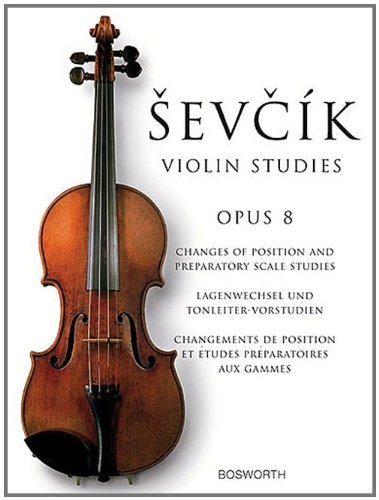-
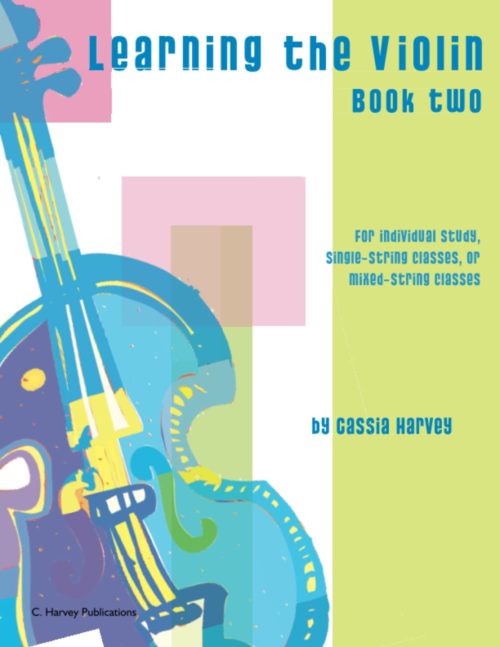 Learning the Violin, Book Two continues the popular string method presented in Learning the Violin, Book One. Besides extensive work in note-reading on all four strings, techniques such as string crossing, slurs, and both right and left-hand agility are taught. This book can be studied in private lessons, in single-string classes, or in mixed-string classes, along with Learning the Viola, Book Two, Learning the Cello, Book Two, and Learning the Bass, Book Two. A score and piano accompaniment is also available. This book could be studied along with Playing the Violin, Book One and could be followed by Playing the Violin, Book Two.
Learning the Violin, Book Two continues the popular string method presented in Learning the Violin, Book One. Besides extensive work in note-reading on all four strings, techniques such as string crossing, slurs, and both right and left-hand agility are taught. This book can be studied in private lessons, in single-string classes, or in mixed-string classes, along with Learning the Viola, Book Two, Learning the Cello, Book Two, and Learning the Bass, Book Two. A score and piano accompaniment is also available. This book could be studied along with Playing the Violin, Book One and could be followed by Playing the Violin, Book Two. -
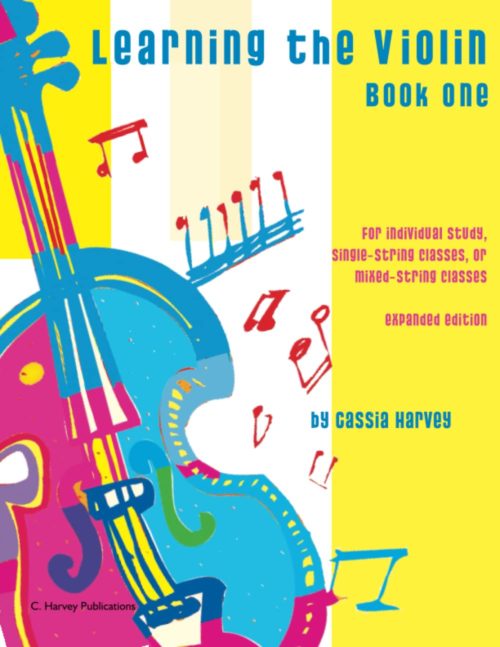 This book is an introductory violin method for the absolute beginner. Starting with open string letters and songs with simple finger numbers, the book progresses to short exercises and familiar songs with large, easy-to-read notes to get the student to play as much as possible. Written for students ages 5-9, Learning the Violin, Book One is especially helpful with younger beginners or students who struggle with note-reading. This book can be studied in private lessons, in single-string classes, or in mixed-string classes, along with Learning the Viola, Book One, Learning the Cello, Book One, and Learning the Bass, Book One. A Score and Piano Accompaniment is also available. This book could be studied along with The Open String Book for Violin and could be followed by Learning the Violin, Book Two.
This book is an introductory violin method for the absolute beginner. Starting with open string letters and songs with simple finger numbers, the book progresses to short exercises and familiar songs with large, easy-to-read notes to get the student to play as much as possible. Written for students ages 5-9, Learning the Violin, Book One is especially helpful with younger beginners or students who struggle with note-reading. This book can be studied in private lessons, in single-string classes, or in mixed-string classes, along with Learning the Viola, Book One, Learning the Cello, Book One, and Learning the Bass, Book One. A Score and Piano Accompaniment is also available. This book could be studied along with The Open String Book for Violin and could be followed by Learning the Violin, Book Two. -
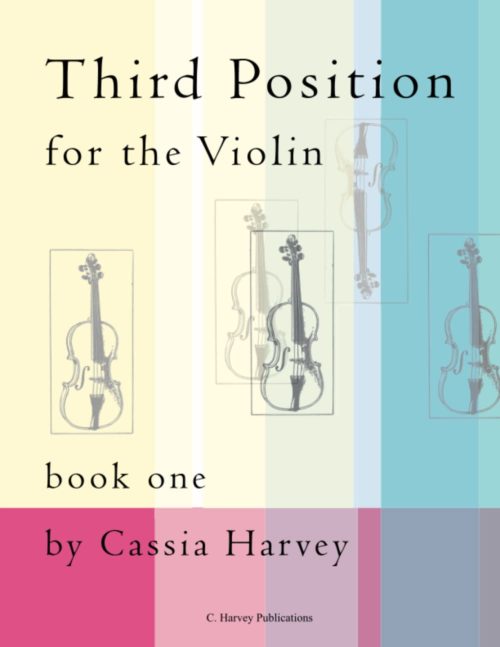 This book teaches the third position on the violin through exercises and relevant short pieces, each designed to teach a specific concept. Third Position for the Violin, Book One is a step-by-step method for introducing the position to you in the least daunting way! Each skill is taught with one or more exercises, followed by a short piece that uses the skill that was just taught. This teaches the student how to use skills in the most practical way, in so that they will be able to easily play third position when it is encountered in standard violin repertoire, such as the Vivaldi Violin Concerto in A Minor. With a systematic approach that includes a strong emphasis on shifting, Third Position for the Violin, Book One is a valuable addition to the violin teaching repertoire. This book can be accompanied by Third Position Study Book for the Violin, Book One, which focuses on playing across strings and reading notes in third position.
This book teaches the third position on the violin through exercises and relevant short pieces, each designed to teach a specific concept. Third Position for the Violin, Book One is a step-by-step method for introducing the position to you in the least daunting way! Each skill is taught with one or more exercises, followed by a short piece that uses the skill that was just taught. This teaches the student how to use skills in the most practical way, in so that they will be able to easily play third position when it is encountered in standard violin repertoire, such as the Vivaldi Violin Concerto in A Minor. With a systematic approach that includes a strong emphasis on shifting, Third Position for the Violin, Book One is a valuable addition to the violin teaching repertoire. This book can be accompanied by Third Position Study Book for the Violin, Book One, which focuses on playing across strings and reading notes in third position. -
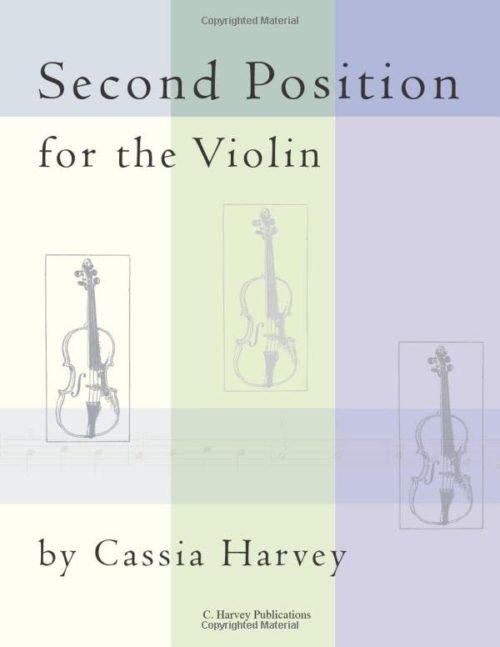 This book teaches the second position on the violin through exercises and relevant short pieces, each designed to teach a specific concept. This book is a step-by-step method for introducing a student to second position in the least daunting way. With a systematic approach through the various finger spacing patterns, Second Position for the Violin is a valuable addition to the violin teaching repertoire. This book can be followed by G Major Shifting for the Violin.
This book teaches the second position on the violin through exercises and relevant short pieces, each designed to teach a specific concept. This book is a step-by-step method for introducing a student to second position in the least daunting way. With a systematic approach through the various finger spacing patterns, Second Position for the Violin is a valuable addition to the violin teaching repertoire. This book can be followed by G Major Shifting for the Violin. -
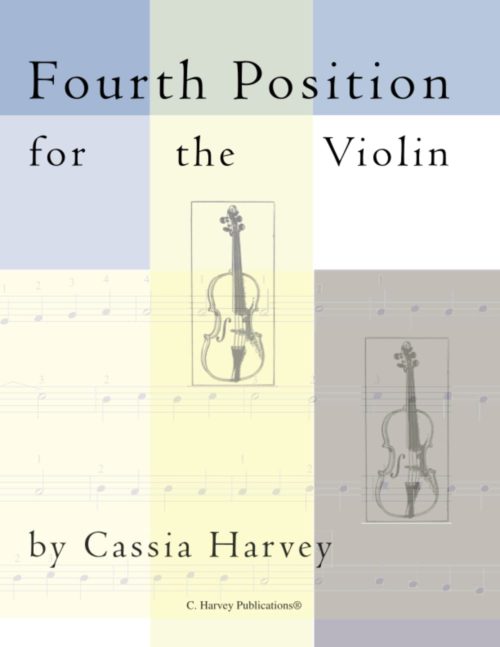 This book teaches the fourth position on the violin through exercises and relevant short pieces, each designed to teach a specific concept. Useful as a step-by-step method for introducing the positions to a violin student in the least daunting way, this book can also be used by students who know fourth position but want to improve their shifting and intonation. With a systematic approach through the various finger spacing patterns and a focus on specific shifting techniques, Fourth Position for the Violin is a valuable addition to the violin teaching repertoire. This book can be studied along with G Major Shifting for the Violin and Serial Shifting for the Violin.
This book teaches the fourth position on the violin through exercises and relevant short pieces, each designed to teach a specific concept. Useful as a step-by-step method for introducing the positions to a violin student in the least daunting way, this book can also be used by students who know fourth position but want to improve their shifting and intonation. With a systematic approach through the various finger spacing patterns and a focus on specific shifting techniques, Fourth Position for the Violin is a valuable addition to the violin teaching repertoire. This book can be studied along with G Major Shifting for the Violin and Serial Shifting for the Violin. -
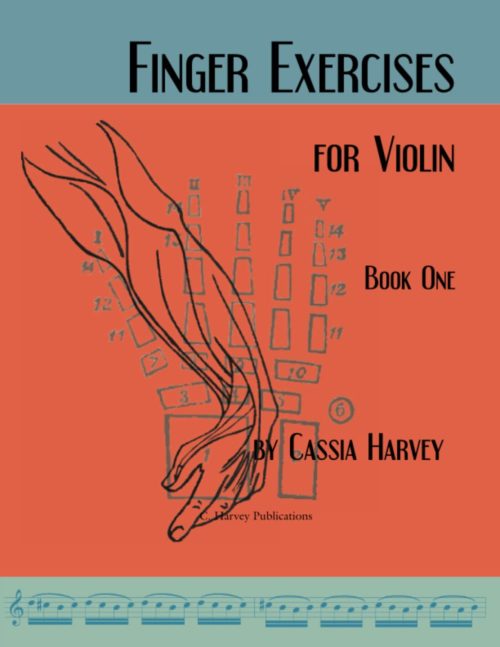 Finger Exercises for the Violin, Book One presents a series of exercises that train the first or second-year violinist’s left hand in strength and agility in first position. With sections that focus on "high second finger", "low second finger", and "high third finger", these studies are a great way to build muscle memory and work on intonation. Each exercise focuses on a pattern that can be used to help your fingers feel less awkward in first position. If you want faster fingers on the violin, playing one or two of these Finger Exercises is a great way to build your technique and improve your finger speed. The book is useful for basic daily training that can work along with a method or repertoire. While not intended for a complete beginner, the exercises can be played by advanced-beginning students who know first position notes on all four strings. These exercises have distilled pure technique into short studies that can help improve your first-position playing in just a few minutes a day.
Finger Exercises for the Violin, Book One presents a series of exercises that train the first or second-year violinist’s left hand in strength and agility in first position. With sections that focus on "high second finger", "low second finger", and "high third finger", these studies are a great way to build muscle memory and work on intonation. Each exercise focuses on a pattern that can be used to help your fingers feel less awkward in first position. If you want faster fingers on the violin, playing one or two of these Finger Exercises is a great way to build your technique and improve your finger speed. The book is useful for basic daily training that can work along with a method or repertoire. While not intended for a complete beginner, the exercises can be played by advanced-beginning students who know first position notes on all four strings. These exercises have distilled pure technique into short studies that can help improve your first-position playing in just a few minutes a day. -
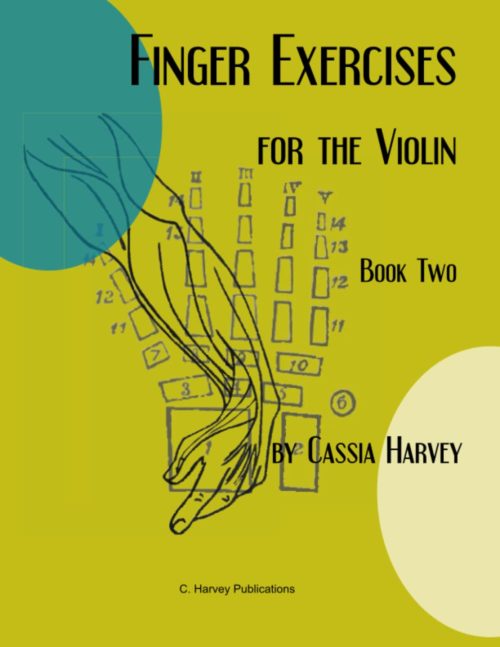 Do you want faster fingers and better intonation? Do you want to improve muscle memory and overall facility on the violin? This book can help! Using eight separate sections, this book gives you short warm-up exercises that focus on specific finger patterns. The overall focus of the book is on high and low first finger and high and low fourth finger. All of the exercises are in first position. These studies will help you prepare for the complicated finger patterns in repertoire and pieces and will help you develop faster fingers on the violin. Improve your violin playing today with these essential technical studies!
Do you want faster fingers and better intonation? Do you want to improve muscle memory and overall facility on the violin? This book can help! Using eight separate sections, this book gives you short warm-up exercises that focus on specific finger patterns. The overall focus of the book is on high and low first finger and high and low fourth finger. All of the exercises are in first position. These studies will help you prepare for the complicated finger patterns in repertoire and pieces and will help you develop faster fingers on the violin. Improve your violin playing today with these essential technical studies! -
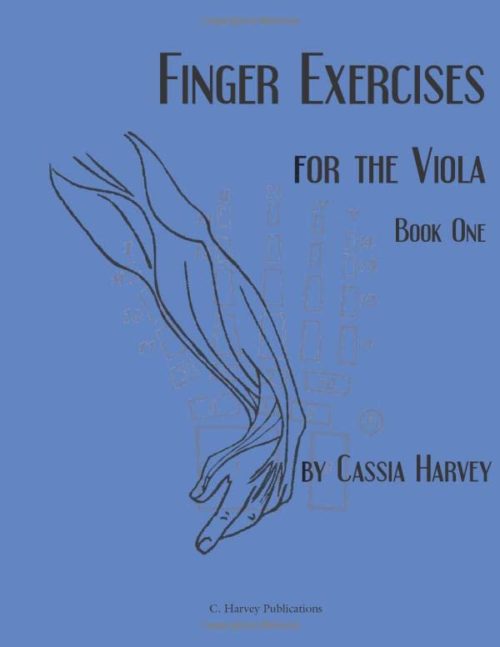 Finger Exercises for the Viola, Book One presents a series of exercises that train the beginning violist’s left hand in strength and agility in first position. With sections that focus on "high second finger", "low second finger", and "high third finger", these studies are a great way to build muscle memory and work on intonation. This book would be most helpful when used with an instructor.
Finger Exercises for the Viola, Book One presents a series of exercises that train the beginning violist’s left hand in strength and agility in first position. With sections that focus on "high second finger", "low second finger", and "high third finger", these studies are a great way to build muscle memory and work on intonation. This book would be most helpful when used with an instructor. -
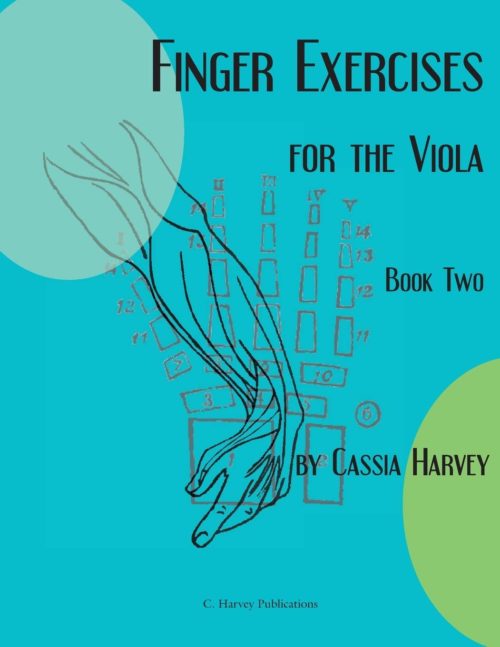 Do you want faster fingers and better intonation? Do you want to improve muscle memory and overall facility on the viola? This book can help! Using eight separate sections, this book gives you short warm-up exercises that focus on specific finger patterns. The overall focus of the book is on high and low first finger and high and low fourth finger. All of the exercises are in first position. These studies will help you prepare for the complicated finger patterns in repertoire and pieces and will help you develop faster fingers on the viola. Improve your viola playing today with these essential technical studies!
Do you want faster fingers and better intonation? Do you want to improve muscle memory and overall facility on the viola? This book can help! Using eight separate sections, this book gives you short warm-up exercises that focus on specific finger patterns. The overall focus of the book is on high and low first finger and high and low fourth finger. All of the exercises are in first position. These studies will help you prepare for the complicated finger patterns in repertoire and pieces and will help you develop faster fingers on the viola. Improve your viola playing today with these essential technical studies! -
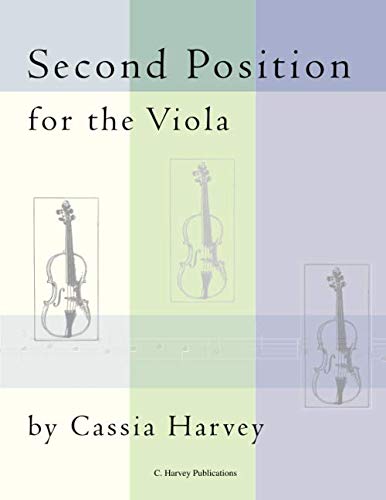 This book teaches the second position on the viola through exercises and relevant short pieces, each designed to teach a specific concept. This book is a step-by-step method for introducing a student to second position in the least daunting way. With a systematic approach through the various finger spacing patterns, Second Position for the Viola is a valuable addition to the violin teaching repertoire. This book can be followed by C Major Shifting for the Viola.
This book teaches the second position on the viola through exercises and relevant short pieces, each designed to teach a specific concept. This book is a step-by-step method for introducing a student to second position in the least daunting way. With a systematic approach through the various finger spacing patterns, Second Position for the Viola is a valuable addition to the violin teaching repertoire. This book can be followed by C Major Shifting for the Viola. -
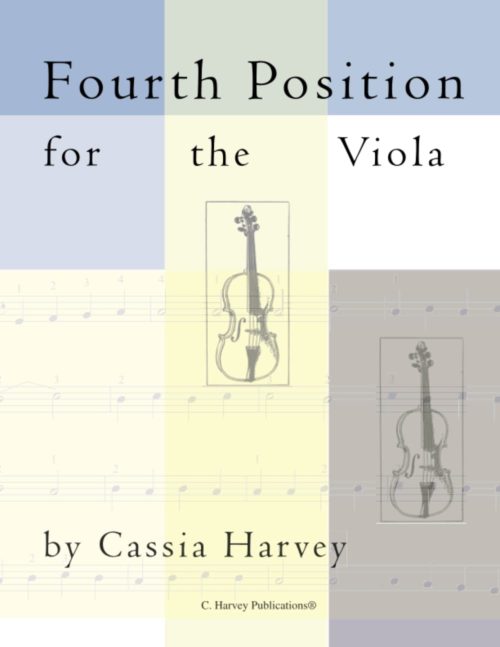 This book teaches the fourth position on the viola through exercises and relevant short pieces, each designed to teach a specific concept. The book is a step-by-step method for introducing a student to fourth position in the least daunting way. With a systematic approach through the various finger spacing patterns and a focus on specific shifting techniques, Fourth Position for the Viola is a valuable addition to the viola teaching repertoire. This book can be studied along with C Major Shifting for the Viola and Serial Shifting for the Viola.
This book teaches the fourth position on the viola through exercises and relevant short pieces, each designed to teach a specific concept. The book is a step-by-step method for introducing a student to fourth position in the least daunting way. With a systematic approach through the various finger spacing patterns and a focus on specific shifting techniques, Fourth Position for the Viola is a valuable addition to the viola teaching repertoire. This book can be studied along with C Major Shifting for the Viola and Serial Shifting for the Viola.

